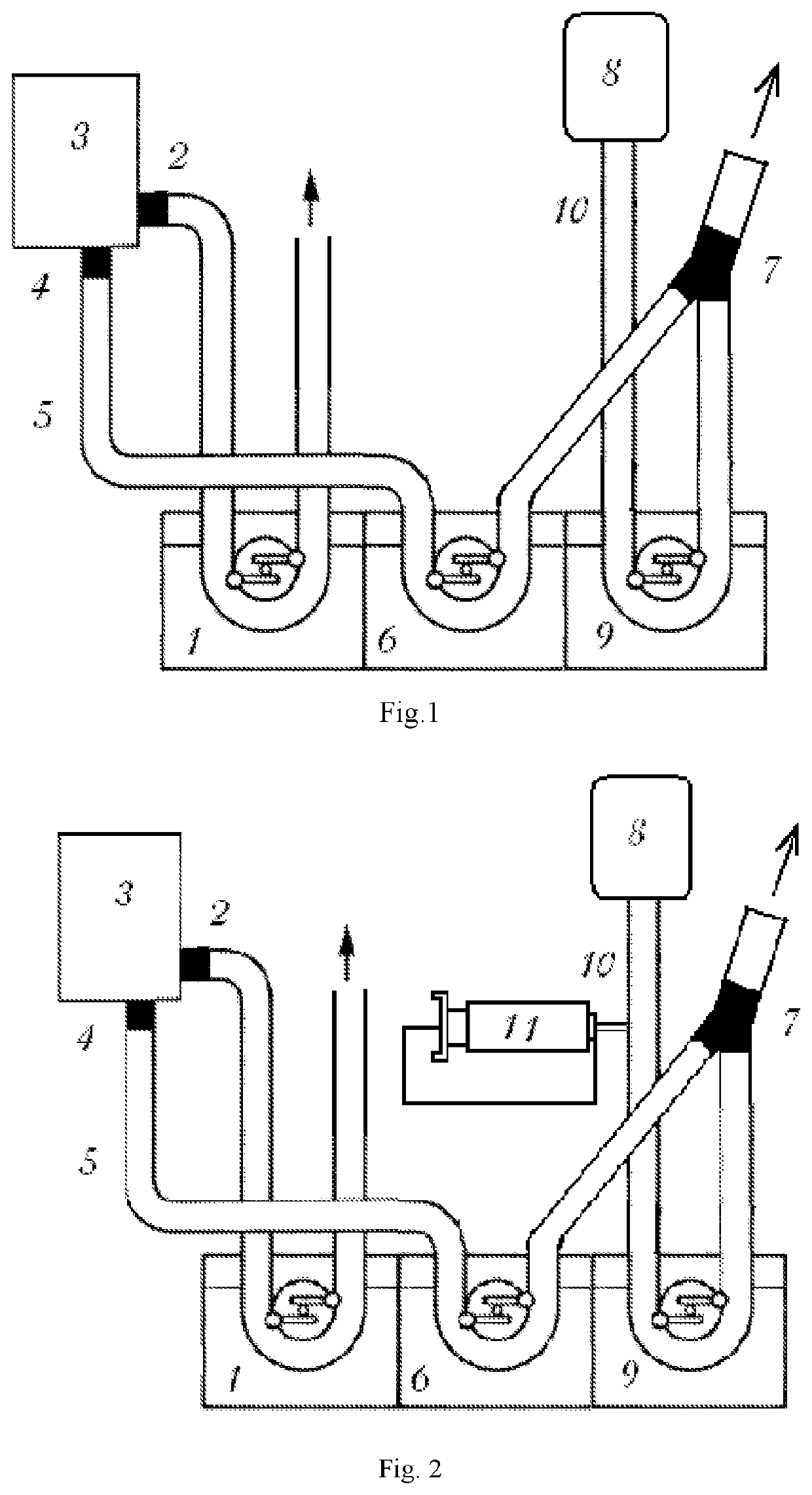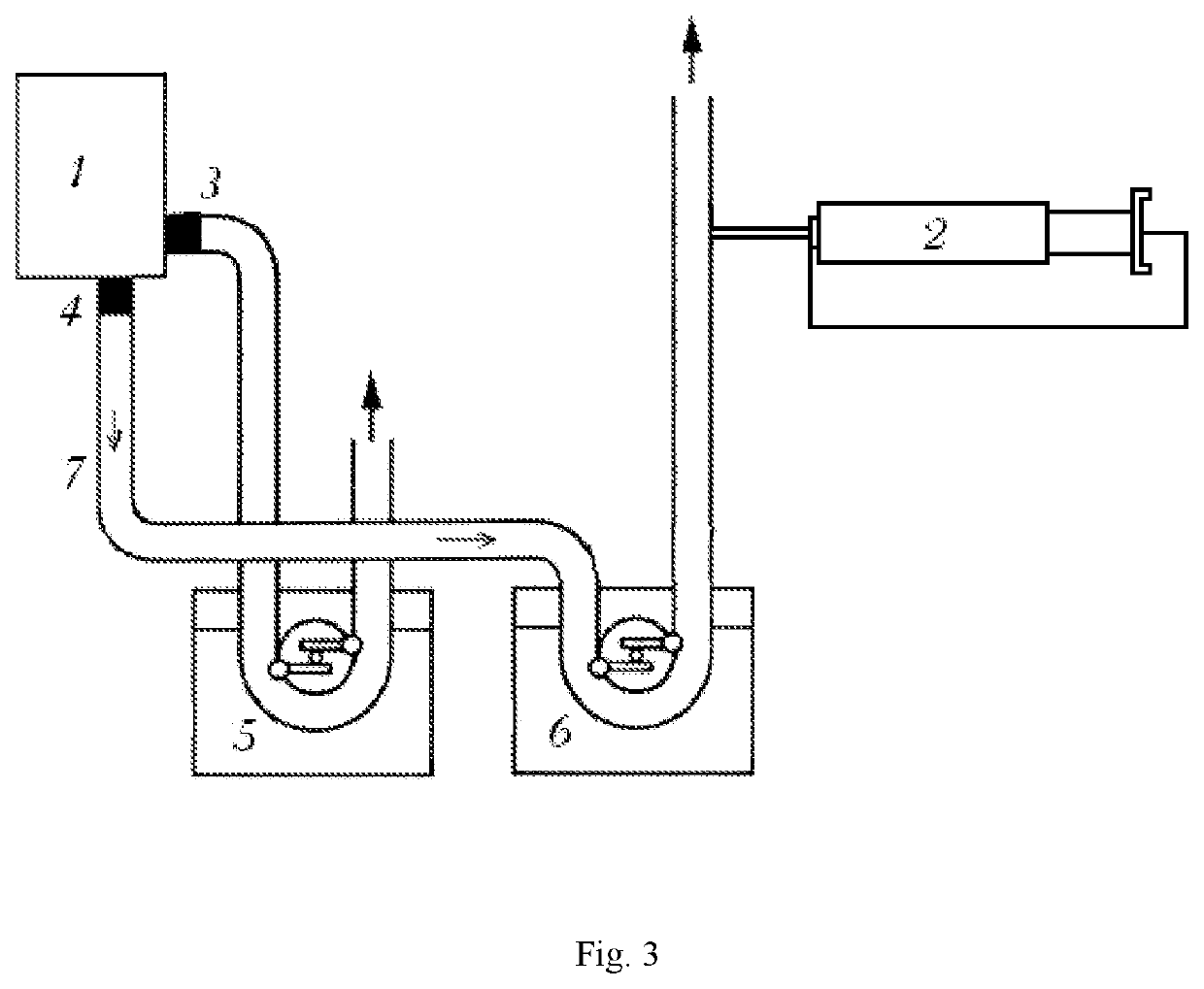Universal cardioplegic solution (variants)
a technology of universal cardioplegic solution and variable volume, applied in the field of medicine, to achieve the effect of avoiding hyperkalemia, fast onset of asystole, and rigid control of the volume of solution
- Summary
- Abstract
- Description
- Claims
- Application Information
AI Technical Summary
Benefits of technology
Problems solved by technology
Method used
Image
Examples
example 2
[0125]GPCS delivery using a HLM roller pump, wherein potassium chloride content is changed during surgery using a syringe dispenser (FIG. 2). This scheme is more preferable in cardiovascular pathologies, when it is desirable to keep the rate of cardioplegic mixture perfusion at a constant level. Here, GPCS components are as follows:
[0126]Potassium chloride: 3.0 g;
[0127]Magnesium sulfate: 2.1 g;
[0128]Trometamol: 0.2 g;
[0129]Mannitol: 30.0 g;
[0130]Acetic acid: 1M to attain pH=7.1;
[0131]Distilled water: up to 1000 ml.
[0132]The syringe dispenser is filled with a 30% potassium chloride solution.
[0133]After the beginning of surgery and connection of the patient to a heart-lung machine, perfusion is performed with keeping the temperatures of the body and the heart within 25-37° C. (the optimum temperature is 36-37° C.). After puncturing the aorta with a cardioplegic cannula, the stock solution is continuously mixed with autoblood from the oxygenator at a ratio of 1:5. GPCS is infused into ...
example 3
[0134]GPCS infusion using a syringe dispenser (FIG. 3). This scheme is more preferable in pediatric surgery and hemodynamically significant pathologies of myocardial vasculature or when hemodilution is undesirable. Here, GPCS components are as follows:
[0135]Potassium chloride: 15.0 g;
[0136]Magnesium sulfate: 2.5 g;
[0137]Trometamol: 1.0 g;
[0138]Mannitol: 40.0 g;
[0139]Citric acid: 1M to attain pH=8.9;
[0140]Distilled water: up to 1000 ml.
[0141]After the beginning of surgery and connection of the patient to a heart-lung machine, GPCS perfusion is performed with keeping the temperatures of the body and the heart within 25-37° C. (the optimum temperature is 36-37° C.). After puncturing the aorta with a cardioplegic cannula, GPCS fed by an electronic syringe dispenser and oxygenated autoblood fed by an HLM roller pump are mixed in a ratio of 1:4. To perform cardiac arrest, GPCS is infused into the aortic root or directly into the coronary ostia, while infusion pressure in the aortic root i...
PUM
| Property | Measurement | Unit |
|---|---|---|
| temperature | aaaaa | aaaaa |
| concentration | aaaaa | aaaaa |
| concentration | aaaaa | aaaaa |
Abstract
Description
Claims
Application Information
 Login to View More
Login to View More - R&D
- Intellectual Property
- Life Sciences
- Materials
- Tech Scout
- Unparalleled Data Quality
- Higher Quality Content
- 60% Fewer Hallucinations
Browse by: Latest US Patents, China's latest patents, Technical Efficacy Thesaurus, Application Domain, Technology Topic, Popular Technical Reports.
© 2025 PatSnap. All rights reserved.Legal|Privacy policy|Modern Slavery Act Transparency Statement|Sitemap|About US| Contact US: help@patsnap.com


